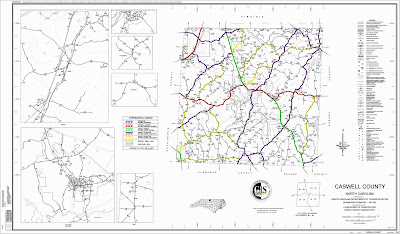Major Thomas J. Brown, the pioneer wholesale tobacco dealer of Winston, N. C., and one of the most extensive dealers in the state, was born in Caswell county, N. C., in August, 1833. The family is one of the oldest and most prominent in the state, and its members have at different times held high offices in both the commonwealth and national government. Maj. Brown was prepared for college at the Dan River institute. His mother then removed with her family to Davie county, in the Yadkin valley, where he engaged in agriculture until the breaking out of the Civil war, when he enlisted in Capt. Kelley's company as a private, but was at once elected lieutenant. This company was organized in Davie county, and afterward assigned to the Fourth North Carolina volunteer infantry. Lieut. Brown served with this command until prior to the battle of Culpeper Court House, and while the same was in camp at that point he was given a permit to return home and raise a new company, which he did, and of which he was elected captain. This company was assigned to the Forty-second regiment North Carolina volunteer infantry. The close of hostilities found him still in the field as a member of the last mentioned regiment with the rank of major, which office he had won by his faithfulness and valor on the following battle-fields: Cold Harbor, all the fights around Petersburg, Fort Fisher, two battles below Kinston, and at Bentonsville, and various skirmishes and engagements of minor importance.
Major Brown returned to North Carolina after the war and was engaged in the manufacture of tobacco for a short time, subsequently removing to Winston, where he established the first tobacco warehouse, and where he sold the first tobacco ever brought to that market, in February, 1872. This industry has since grown to enormous proportions in Winston, and forms one of its most important enterprises, the sales from Major Brown's establishment alone amounting to between four and five million pounds annually. This progressive gentleman is also a member of the extensive hardware firm of Brown, Rogers & Co., of Winston; is a partner in one of the largest dry goods houses in the city; is also a director in the First National bank of Winston, largely interested in three different land companies, and a stockholder in the Roanoke & Southern railroad company. Major Brown has been an elder in the Presbyterian church for a number of years, as well as superintendent of the Sunday-school. Major Brown was happily married in 1868 to Miss Delphine Hall, of Mobile, Ala. This estimable lady died on the 8th of August, 1889, leaving no children. Her father was Daniel Emerson Hall, a native of Middle Granville, N. Y., who graduated at Yale in the class of 1834. Subsequently he read law with his brother, Willis Hall, a prominent lawyer and politician and at one time attorney-general of New York state, and then removed to Mobile, Ala., where he soon rose to eminence in his profession, and married a descendant of Louis D'Olive, a French officer sent out by his government.
Major Brown is the son of John E. Brown, M. D., who was born in Caswell county, N. C., in 1800 and died in 1846. He was an eminent physician of his day, having prepared for his professional career in the old University of Pennsylvania, at Philadelphia. He served as a member of the legislature of his state, and for many years was chairman of the county board in Caswell county. In 1826 he married Miss Elizabeth B., daughter of Mr. Jesse Carter, and five children blessed their union, the four surviving ones being Col. John Edmunds Brown, of Charlotte, N. C., a prominent lawyer and an elder in the Presbyterian church; Major Thomas J. Brown, Sallie C., widow of Mr. W. E. Hall, and Miss Jessie E. Brown. The eldest child was William Carter Brown, M. D., who was a surgeon in the Confederate service and died from illness contracted in camp in 1862.
The Hon. Bedford Brown, who served as United States senator for many years, was an elder brother of John E. Brown, and they were sons of Jethro Brown, a Virginian, who spent his active life in Caswell county, N. C., as a planter and merchant. When a young man he removed to North Carolina, where, for several terms, he served as chairman of the county court of Caswell county, N. C., and died leaving the family name stainless. His father was John Brown, who was born in Virginia, and came to North Carolina during the Revolutionary war, and died in this state. This branch of the Brown family originated in Bedfordshire, England, having emigrated to America many years prior to the Revolution. Elizabeth Brown Carter, who became the wife of the Hon. John E. Brown, M. D., was a descendant of the Shirley Carter family, of Virginia. This proud old family furnished one of the signers of the Declaration of Independence.
Permalink












